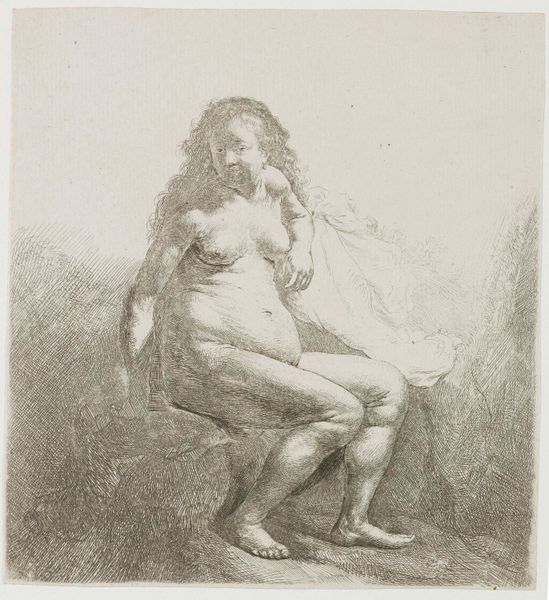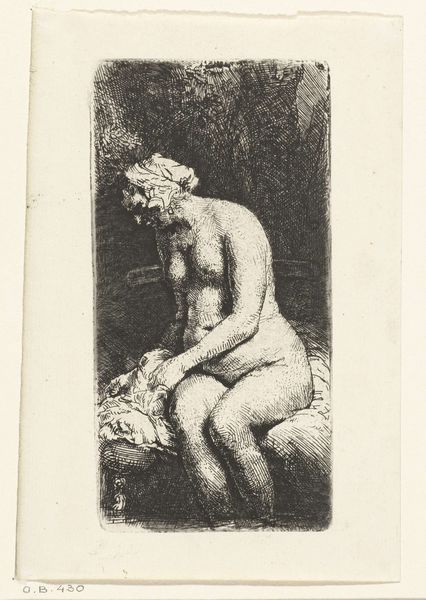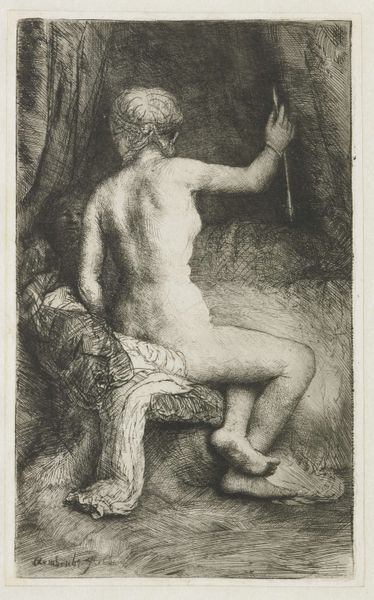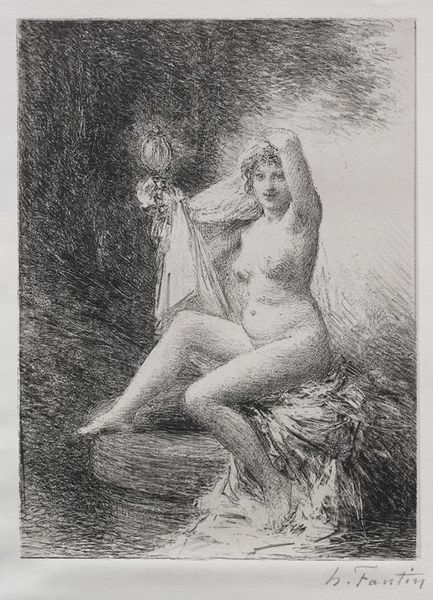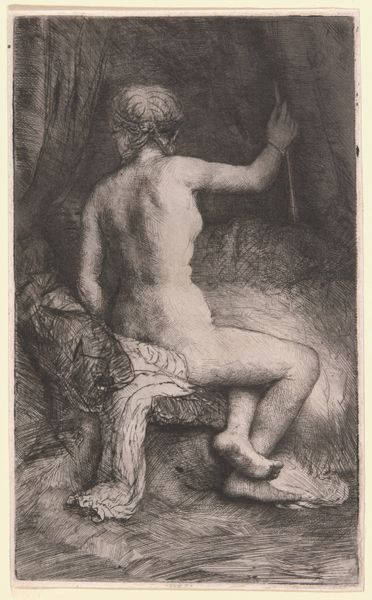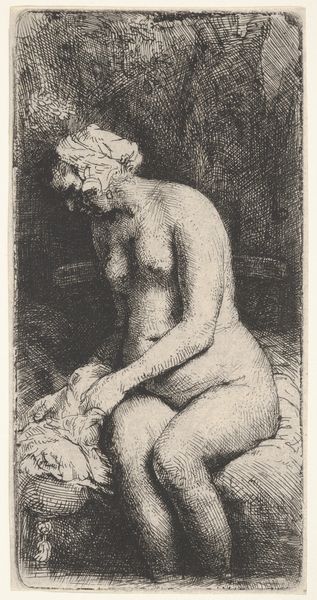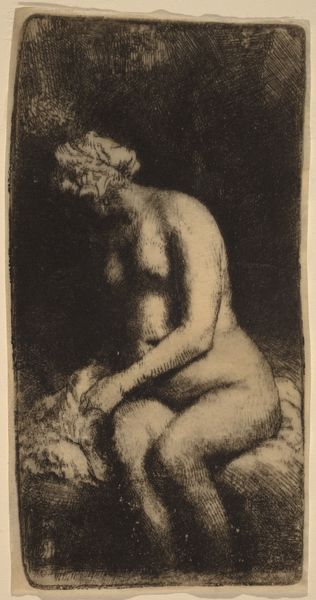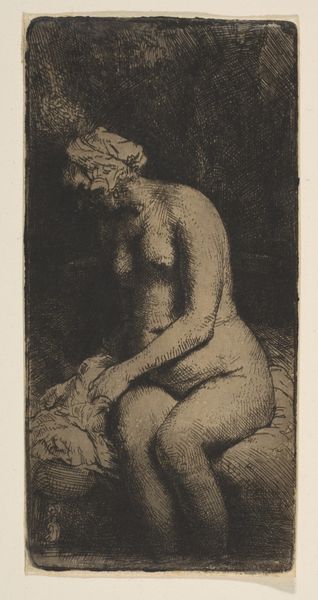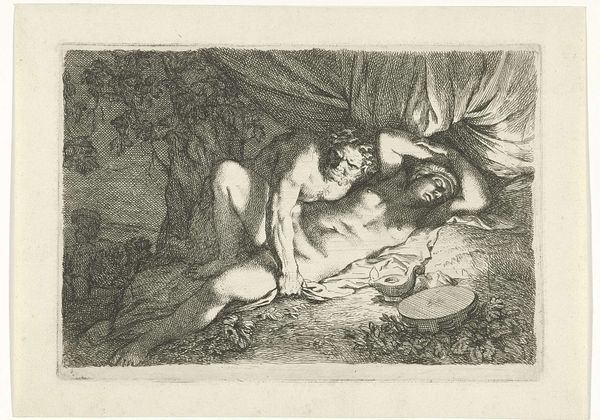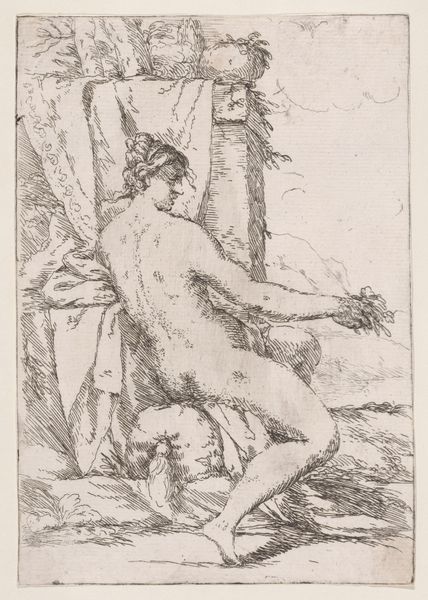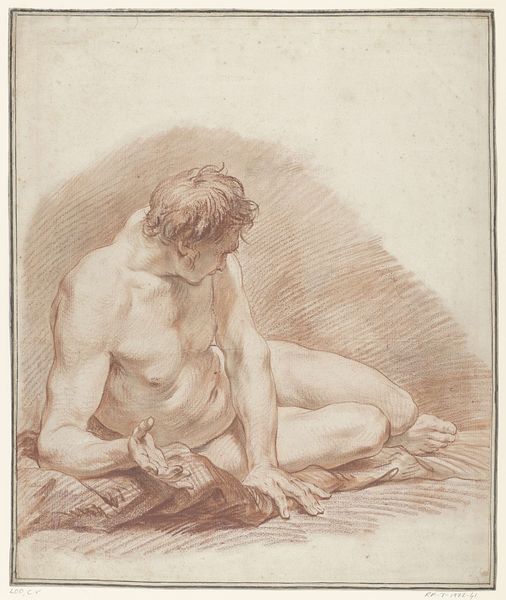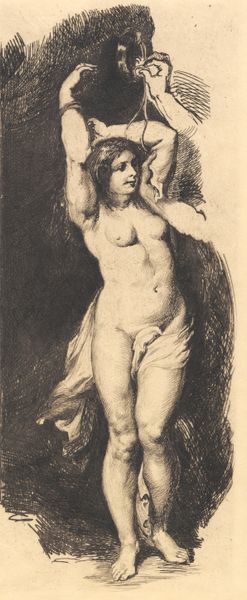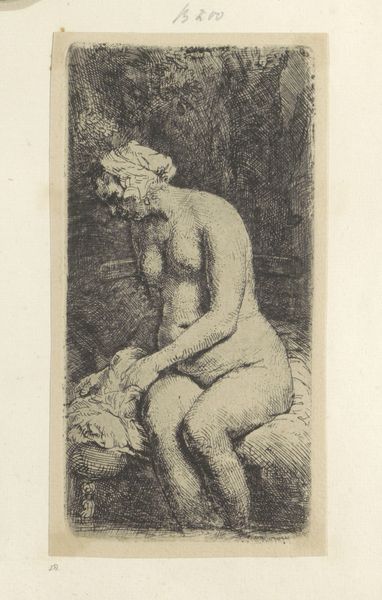
etching
#
baroque
#
etching
#
genre-painting
#
nude
Dimensions: height 177 mm, width 160 mm
Copyright: Rijks Museum: Open Domain
Curator: Rembrandt van Rijn’s etching, "Naked woman on a mound," created around 1631 and housed in the Rijksmuseum, presents a study in light and shadow using delicate, almost fragile, lines. Editor: My immediate response is one of intimacy. The way the etching renders her body feels quite raw, vulnerable, defying idealized forms typical of that era. Curator: Precisely. Note the stark contrast between the densely etched foreground depicting the earth and the ethereal, almost cloud-like, background. How do you read that spatial dynamic? Editor: I read it as a subtle commentary on the artifice of representation itself. Here’s a body situated on this crude mound. Her humanity contrasts sharply with the ways women were rendered within the prevailing patriarchy of artmaking at the time. It subverts the tradition of idealizing the female nude, presenting a naturalistic portrayal that emphasizes the reality of the subject. Curator: Consider, though, the technical skill required to achieve that level of detail and texture with etching. Look at the varying densities of the cross-hatching that articulate the form—it’s almost sculptural. Editor: Yes, his mastery is evident, but to what end? Isn't the choice of subject, the act of representation, as powerful as the technique itself? This is not the seductive, anonymous female figure we so often see, but a woman existing outside of societal expectations, perhaps reclaiming agency through representation, even if the image is still created by a man. Curator: One could also argue it's simply a genre study, an exploration of the human form through light and shadow. But you make a compelling case to consider her social placement. Editor: Ultimately, isn't that what makes art vital? It forces us to negotiate form and context, aesthetics and ethics, the personal and the political. Even in something as seemingly simple as an etching. Curator: Indeed, this prompts us to acknowledge that even within meticulous lines, layers of history and discourse can converge. Thank you for sharing that insightful perspective. Editor: And thank you for unpacking it with me through this thoughtful dialogue.
Comments
No comments
Be the first to comment and join the conversation on the ultimate creative platform.
